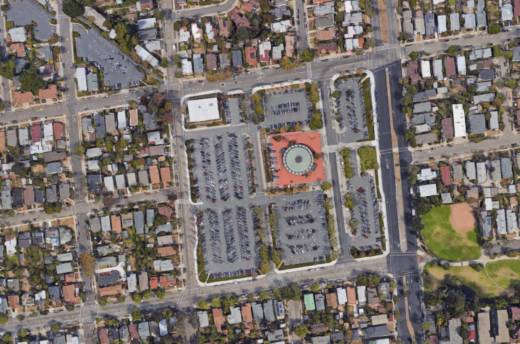The scores of people who addressed the meeting, organized by Berkeley Councilmember Linda Maio along with Mayor Jesse Arreguin and BART board member Rebecca Saltzman, brought up related concerns. The two issues voiced most often were that high housing prices have forced out many people of color and low-income residents and that failing to build housing has been a major factor in suburban sprawl, which in turn forces many in the region to drive long distances to work and worsens greenhouse gas emissions.
Most of the dozens who spoke told city and BART officials they’d support residential development. But opinions diverged on how much housing and how quickly it should be built. The two primary concerns that emerged were that any development be in scale with the rest of the neighborhood, which is almost all single-family homes, and that BART take steps to replace parking spaces removed as a result of any housing development at the station site.
Arreguin made a presentation early in the meeting on SB 827, the "transit-rich" housing development bill by state Sen. Scott Wiener and cosponsored Berkeley state Sen. Nancy Skinner, that would require the city to permit construction of 55- to 85-foot buildings within half a mile of the station.
And BART officials briefed the audience on its guidelines for transit-oriented development, including graphics that showed four- and five-story buildings the agency says are representative of current and planned projects near district stations.
"Some of the examples you showed in the BART presentation were stations alongside freeways and major boulevards," station neighbor David Finn said. "North Berkeley is one of the only stations in the entire system that’s in an R1-R2 residential neighborhood. Right? Zoning has to do with density. And whatever goes there -- housing is fine, but it needs to be appropriate. A 55- or 85-(foot) building in that area, where you've cleared single-family houses, is absurd."
Finn got loud applause. And so did West Berkeley resident and BART commuter Mike Pavone when he pushed back.
"Someone said earlier that they thought an 85-foot building on this site would be ridiculous," Pavone said. "What I think is ridiculous is a giant service-level parking lot surrounded by single-family homes at a station that’s 26 minutes from the core job centers in San Francisco."
Alan Tobey, a "smart growth" activist who has lived near the station for more than 40 years said before the meeting he’s seen this debate before. Late 1960s plans for large-scale development at and near the North Berkeley station helped spark a neighborhood movement that stopped denser residential construction in most of the city.
"The buildings on Hearst (Avenue) would have been 10 stories in a solid row down the street," Tobey said. A proposal for the station site also featured high-rise buildings.
"It was so out of scale for a neighborhood that had not been consulted that the people rose up and in two or three years produced what's called the Neighborhood Preservation Ordinance," Tobey said. "That stopped that development and also the parallel practice of converting single-family homes into eight-plexes anywhere you wanted in the flatlands."
He said that Thursday's discussion may be a sign that the area's long-time resistance to development may be changing.
"The loss of the first proposal cost us 45 years until BART had the nerve to come back," Tobey said. "I hope we’ve all learned something since then and can all be cooperative about what seems to be much more possible than it was then."
There's currently no timeline for BART and the city to decide whether they'll proceed with housing at the site.
Mayor Arreguin said that if SB 827 does not pass and Berkeley retains the power to set the zoning in the area, the city would work with the community to develop a plan.
"I want to assure everyone that this is the beginning of a conversation where we will definitely engage the immediate neighborhood in a process if we do decide to move ahead with exploring housing on that site," Arreguin said.

